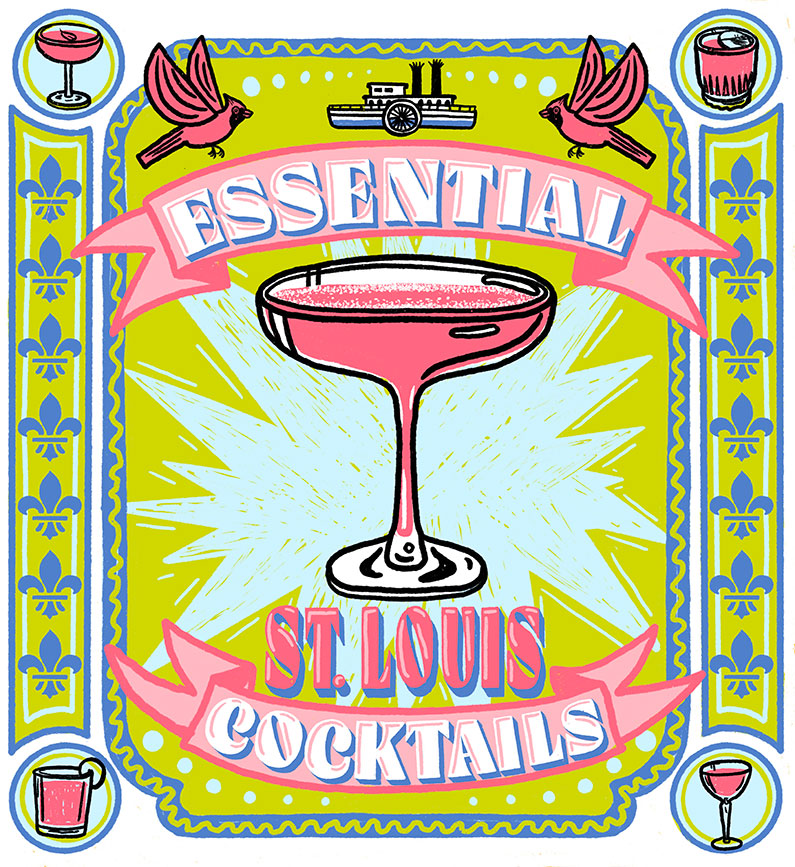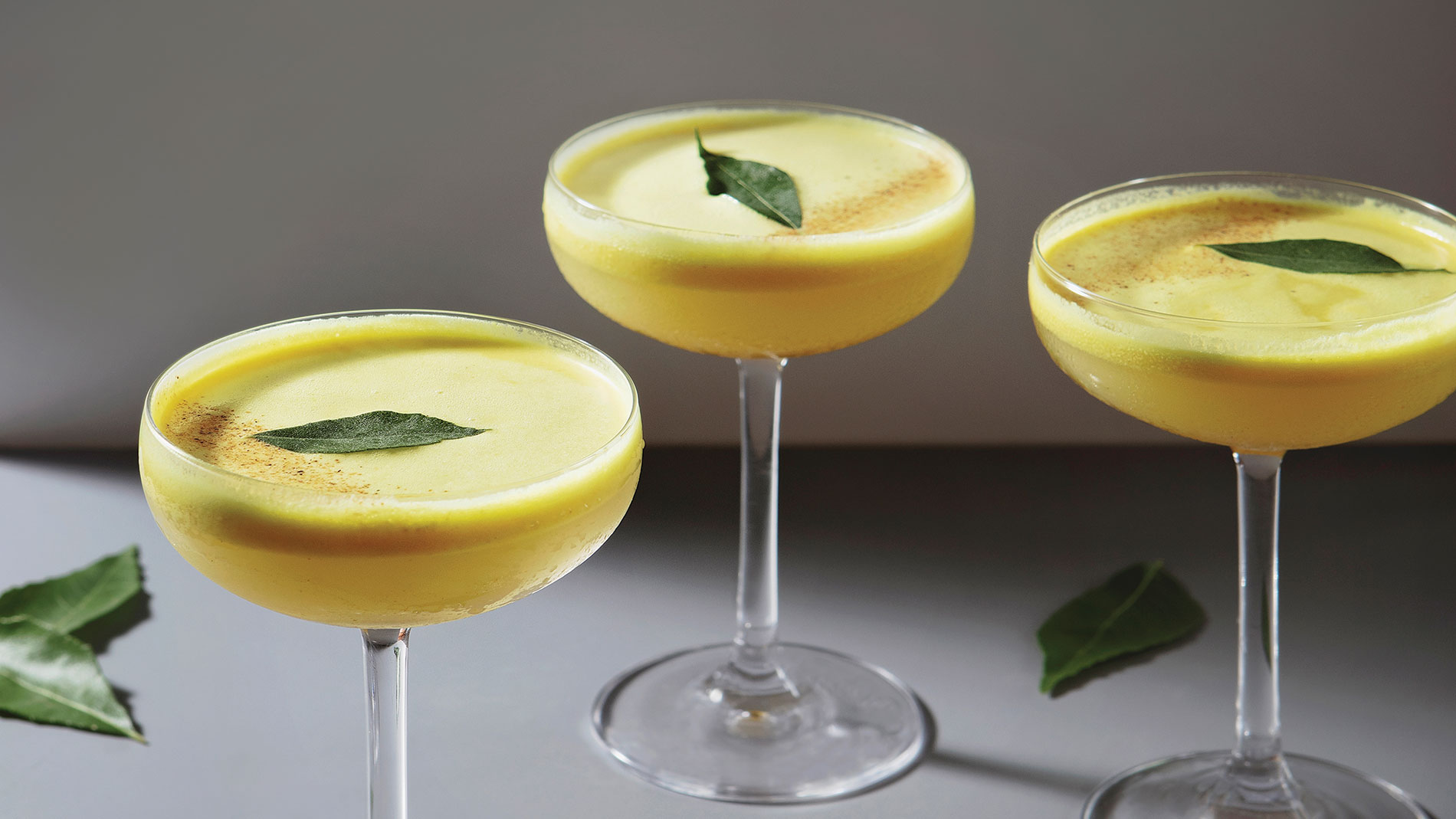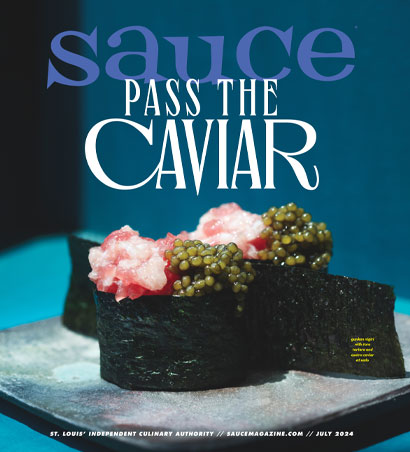5 iconic St. Louis cocktails
Over the last 20 years, primed by a global renaissance of the art of the mixed drink, St. Louis bartenders have fashioned their own creations in the spirit of both experimental rigor and playful abandon. In the process, several local originals have become St. Louis essentials, inspiring copycats and homages and giving young bartenders the spark for further creation. It may be a little premature to call any St. Louis cocktail genuinely iconic, with the widespread recognition and reverence that label implies. Still, it’s entirely possible that we’ve been drinking the quintessential St. Louis cocktail for years and just not realized it – until now.

TED KILGORE: INDUSTRY SOUR (2011), PURGATORY (2007), IN A PICKLE (2010)
A tremendous amount of credit for the current shape of St. Louis’ cocktail culture is owed to Ted Kilgore, co-owner of Planter’s House and Small Change and formerly of Monarch Restaurant & Wine Bar and the legendary Taste by Niche. Kilgore and his creations have been profiled in publications like Esquire and Food & Wine and by well-known cocktail writers like the late Gaz Regan, raising those drinks’ profile locally and putting them on travelers’ agendas.
Three of Kilgore’s creations are contenders for essential status: the Industry Sour, created at Taste in 2011, and Purgatory, created at Monarch in 2007. Planter’s House currently offers a version of the Purgatory (rye, Benedictine and Green Chartreuse) as part of its barrel-pick cocktail program. The Industry Sour recipe is heavier on Green Chartreuse, and with the latter scarce these days, Kilgore took the cocktail off his menus. “People have to know to ask for it,” he said. Other bars are adapting the recipe to substitute something like genepy to replace the Green Chartreuse.
“I’ve found [the Industry Sour] as far away as Melbourne, Australia and Amsterdam,” Kilgore said. During a recent stop in Spokane, Washington, Kilgore found himself in a bar where he couldn’t help but overhear the manager talking to a bartender about the Industry Sour. “I was like, ‘If you have any questions, I can tell you about it, because it’s my cocktail,’” he said.
If one St. Louis drink could be labeled iconic, however, it would probably be Kilgore’s In A Pickle, which is still on the menu at both Planter’s House and Small Change. Its recipe of Hendrick’s gin, velvet falernum, St. Germain and lime juice, garnished with dill and cucumber, remains fresh and unique. Although it has received acclaim from national media, Kilgore said the In A Pickle is still “way more regional” than the Industry Sour, the latter having become something of a “bartender’s handshake.” Still, years after the In A Pickle first appeared, Kilgore said customers are bringing friends into Planter’s House telling them they have to order it. “It’s just so well-known in St. Louis,” he said.
Tim Wiggins, co-owner of cocktail consultancy Bangers Only and the On Point Hospitality restaurant group, said the In A Pickle’s influence on the local scene is palpable in part because it fits a rubric that facilitates a cocktail’s path to “essential” status. “It’s made from ingredients you can buy, it doesn’t have any homemade, unique ingredients – and yet it’s unique to that place,” Wiggins said, referring to the original Taste by Niche location, where the drink was created. “People are now ordering refreshing, herbaceous gin cocktails with savory elements, and that’s good for St. Louis cocktail culture. When you look at cocktail bars’ menus in St. Louis, almost everyone has some sort of riff on an herbaceous, lightly salty, gin shaken cocktail.”
TIM WIGGINS: GOLDEN STATE (2016)
Neither the name nor the Indian-inspired flavors of Retreat Gastropub’s Golden State suggest its Midwestern provenance, but beverage professional Matt Sorrell said it’s a worthy addition to any list of essential St. Louis cocktails. “Everybody’s had it, everybody loves it, and it just stays on the menu,” said Sorrell, who is currently a bartender at Bistro La Floraison as well as a contributing writer to Sauce. Created by Tim Wiggins in 2016, the Golden State has become a classic largely via word of mouth. Its yellow-gold hue is an immediate attention-grabber, while the drink itself blends notes of turmeric, ginger, coconut and curry leaf over a base of gin and curacao noir. Big Heart Tea’s Sunshine Dust tea provides the turmeric and ginger infusion, while Wiggins uses Kansas City’s J. Rieger & Co. gin.

THE ROYALE: SUBCONTINENTAL (2005)
The Royale’s Subcontinental is another drink whose unique flavor profile backs up its love-at-first-sight appeal. An elder statesman among its peers, The Royale was part of the initial wave of St. Louis bars that helped bring cocktails to the fore with an emphasis on fresh juice, herbs and other quality ingredients. Owner Steven Smith said several of the bar’s longstanding cocktails – the Mr. Smith (gin, mint syrup, lime and ginger beer) and the Butler Miller (a patron’s creation of vodka, lime and Chambord), for example – have amassed a loyal following, but the Subcontinental has a particularly seductive effect on customers.
On the menu since The Royale opened in 2005, The Subcontinental is a translucent green cocktail of gin, Cointreau, cucumber juice, lime juice and simple syrup. “It was one of the first in town to use cucumber juice, and it was fresh – very unique,” said Kilgore. It’s one of those drinks Smith says has always had a “domino effect” on customers, where people order it because it catches the eye when they see somebody else having it. It’s what we now understand as virality, and these days it’s not unusual for amateur bartenders to tag The Royale on Instagram with photos of their homemade Subcontinentals. “It’s definitely the signature drink of our place, and it’s very popular,” Smith said. “I would guess it’s probably in the top five drinks consistently for nearly 20 years.”
One sure sign that a cocktail is gaining cultural resonance is when customers start ordering it in other bars. Another is when those other bars add the drink to their own menus, sometimes under a new name. “Cucumber drinks, I’ve seen them in a couple of places very similar to here, and I’m like, ‘Well, that’s cute,’” Smith said. “If you call it the Subcontinental, I’m not going to come after you, but it would be nice if you called it that.”
SHOTS, SHOTS, SHOTS
Also, St. Louis, let’s be honest. There are times – usually ending in “a.m.” – when we allow for a more permissive definition of what counts as a cocktail. “As far as what we all seem to order, it does seem to revolve around the Boilermaker idea,” said Pat Gioia of The Vandy. “Your classic Stag beer and shot of whiskey was always real popular among a lot of the bar and club people themselves.” Tim Wiggins said if the crowd at South Grand Blvd. stalwarts like CBGB and the now-shuttered Mangia Italiano wasn’t drinking a beer and a shot, it was usually a whiskey ginger. “That was as nice as a cocktail got – but also delicious!” he said. Steven Smith called out the Sandinista, a shot of tequila, lime juice and Sriracha which, legend has it, Doug Morgan, co-owner of The Saturn Lounge, invented at the much-missed Upstairs Lounge.
THE PRESENT: REBUILDING PHASE
Wiggins noted that St. Louis is currently in the middle of a “rebuilding” phase when it comes to cocktails. Bartending is already a career where attrition takes its toll, but the pandemic inflicted a major blow in terms of people leaving the industry. “The people who were making the most exciting cocktails eight or nine years ago are all out of the game, except for Ted [Kilgore],” said Wiggins. However, there are also new talents emerging, with experienced mentors to learn from and new bars making an impact on the scene, including Tony Saputo and Meredith Barry’s Platypus, Barry and Michael Fricker’s New Society, and The Vandy.
Gioia compared the current state of cocktails in St. Louis to an eclectic “wildflower explosion” of creativity that may take years to fully bloom. “The experimental nature of what we're doing has caught on among a lot of people,” he said. “Maybe in another five to 10 years we will have some truly iconic drinks in the same way like if you think of the Sazerac of New Orleans.”
Tags : Cocktails, Places, Guide to Drinking, Bars
Most Recent
Drink this savory martini at The Lucky Accomplice in St. Louis
The Lucky Accomplice’s bar manager Corey Moszer is thinking outside the box …






